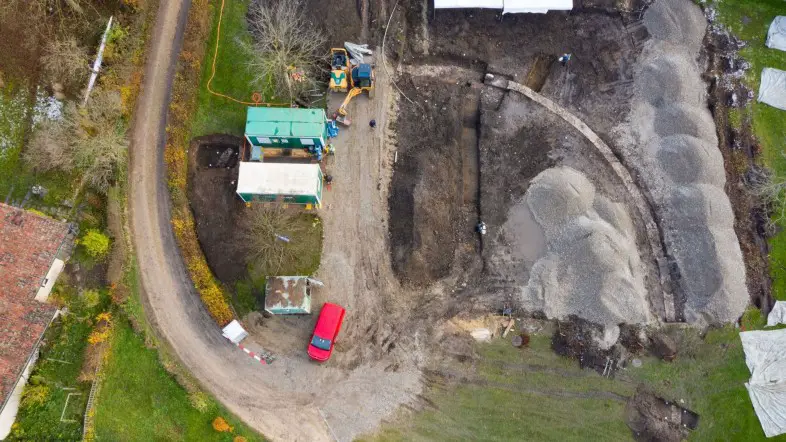 hat is considered to be one of the last gladiator amphitheaters built during the reign of the Roman Empire had been discovered by mistake in Switzerland. A construction company was assigned to build a new boathouse on the Rhine River. Whilst digging to make space for the foundation, the construction workers stumbled upon a big structure made out of stone blocks and mortar, something that hasn’t been used for hundreds of years.
hat is considered to be one of the last gladiator amphitheaters built during the reign of the Roman Empire had been discovered by mistake in Switzerland. A construction company was assigned to build a new boathouse on the Rhine River. Whilst digging to make space for the foundation, the construction workers stumbled upon a big structure made out of stone blocks and mortar, something that hasn’t been used for hundreds of years.
Last Gladiator Arena
The find, made in Kaiseraugst, a municipality named for the ancient Roman city of Augusta Raurica, was announced by the Department of Education, Culture, and Sport in the Swiss canton of Aargau. Archeologists started unearthing a large gate to the south of the amphitheater to find a preserved sandstone block. The amphitheater, which is about 164 feet (50 meters) long and 131 feet (40 m) wide, sits in the valley of the quarry.
Around the arena were also other artifacts that helped archeologists define the age of this amphitheater. An interesting aspect is that the arena was built in an abandoned Roman quarry which makes historians believe it had been built towards the end era of the Roman Empire. Another important discovery was a gold coin that dates between 337 A.D and 341 A.D.
Based on these two facts, this could be the last gladiator arena ever built by the Roman Empire or at least within the Roman Empire. This concludes the amphitheater to be around 1700 years old and yet it had been buried a couple of feet during this period of time. Jakob Baerlocher, an archaeologist at the site and head of excavations in Kaiseraugst mentioned that construction materials such as stone blocks and mortar were only used from the start of the 4th century, confirming the age of the structure.
After 341 A.D, the Roman Empire started its slow decline, therefore it had to focus all of its assets towards defending the Empire. This is what makes it plausible for this to be the last arena ever built by the Roman Empire. In 401 A.D the Roman Empire had collapsed and with it many of its incredible architecture.
Roman Empire in Switzerland
This is the third gladiator arena that has been discovered in Switzerland. To some, it may come as a surprise, but modern Switzerland was part of the Roman Republic and Empire for six centuries. Many Roman structures have been discovered within this country. In 58 B.C, Julius Caesar prevented the Helvetians from leaving the Swiss plateau when they wanted to avoid the Germanic incursion from the west by migrating to the south of France.
Caesar sent them back and settled them under the rule of the Roman Empire in order to reduce the shock and form a barrier between antagonistic people. After Ceasar died, Emperor Augustus took over and he increased the Roman Empire’s influence over Switzerland. Those who lived in Swiss territory came under Roman Rule in 15 B.C.
“The Helvetians, because of their geographic situation, are hemmed in on all sides. This restricts them in waging war on their neighbors, which is a very painful situation for men who have a passion for fighting. They do not consider the extent of their territory sufficient either for their number, or for their military prowess, or for their reputation for courage.” (Quote from Gaius Julius Caesar (100–44 BC) The Gallic Wars, Book 1)
Gladiator arenas were not just a great source of entertainment within the Roman Empire but also money-making machines. Betting on gladiators was just like the modern version of betting on horse rides, with the small difference that one of the participants would die at the end. As gladiator fights became more mainstream, there was a bigger demand, therefore a need for each Roman city to have an amphitheater.
Although it is a great discovery, the amphitheater isn’t as big as the Colosseum in Rome which seated roughly 50,000 people and the central arena was about 285 feet by 180 feet (87meters by 55 meters). It is going to take a few months until the whole amphitheater is dug from the ground, but I cannot wait to see pictures of it in its full glory.
A question that needs to be raised is how many more Roman structures are buried underneath Switzerland?
Avid Writer with invaluable knowledge of Humanity!
Upcoming historian with over 30 million views online.
“You make your own life.”





